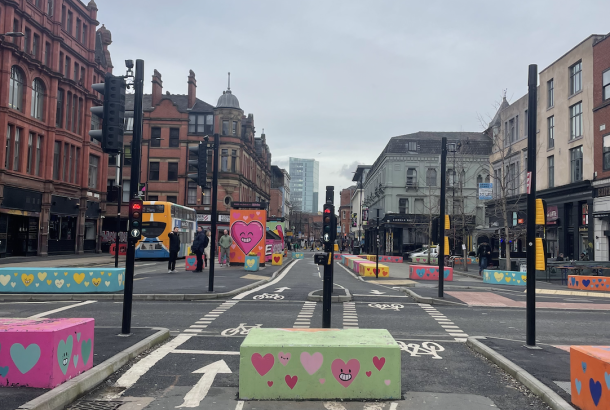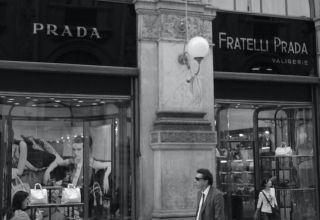The man, the myth, the building: The Stephen Joseph Studio
By kaiscotney

The University of Manchester campus is a melting-pot of architectural styles from across the last two hundred years, but there is one building that feels uniquely out of place. Just off University Green, sandwiched between the Samuel Alexander and Mansfield Cooper buildings, is a tall and narrow stone church.
You may never have had a class there, but you have probably noticed its unusual appearance. Its stone exterior is largely exposed with the bottom decked in white, and it has a distinctive rose window on its face.
The Stephen Joseph Studio looks so out of place because unlike the rest of the university it wasn’t built for the purpose of hosting classes, seminars and lectures. It was in fact built in the 1850s as a German Protestant Church, or as the Deutsche Protestantische Kirche with the Evangelisch-Unirter Confession, to give its full name.
With the boom of the textiles trade centred in Manchester throughout the 19th Century, the city’s wealth brought in people from around Europe including a sizeable German population. The church served this minority in what was then an emerging suburb of South Manchester called Greenhays.
Back in the 1850s the University of Manchester was located in the City Centre in its past forms of Owens College and The Mechanics Institute. It wasn’t until the 1870s that Owens College would relocate to Oxford Road, near the church.
For decades the German Protestant Church ran services undisturbed. The 1871 Census recorded that there were more Germans in England and Wales than any other expatriate group, and the history of intermarriage between royal families in Britain and Germany meant relations between the two countries throughout the Victorian era were generally good.
However, the outbreak of the First World War devastated the German community in Manchester, who faced xenophobic attacks. The church survived, but its congregation continued to dwindle throughout the 1920s and 1930s and into the Second World War. The university bought the church in 1949 as it began to expand throughout the post-war decades into the campus that we know today.

The old church was later renamed after Stephen Joseph, a pioneering stage director. He brought a new form of American staging, ‘theatre in the round’, to the UK in the 1950s, and ran a theatre company at Scarborough Public Library. The now-popular ’round’ style has its audience encompass the action, seated all around the stage, rather than watching it from one direction.
Joseph taught at the University of Manchester, and became the first Fellow in Drama at the University’s newly established Department of Drama in 1962. He died at the age of just 46 in 1967. A tribute to Stephen Joseph marking the 50th Anniversary of his death was held at the university in 2017 to celebrate his legacy.
When walking past the Stephen Joseph Studio now, I think mainly of the German community, for whom for nearly one hundred years this campus oddity was the centre of a shared language, culture and faith – a home away from home in strange and rapidly changing times.







